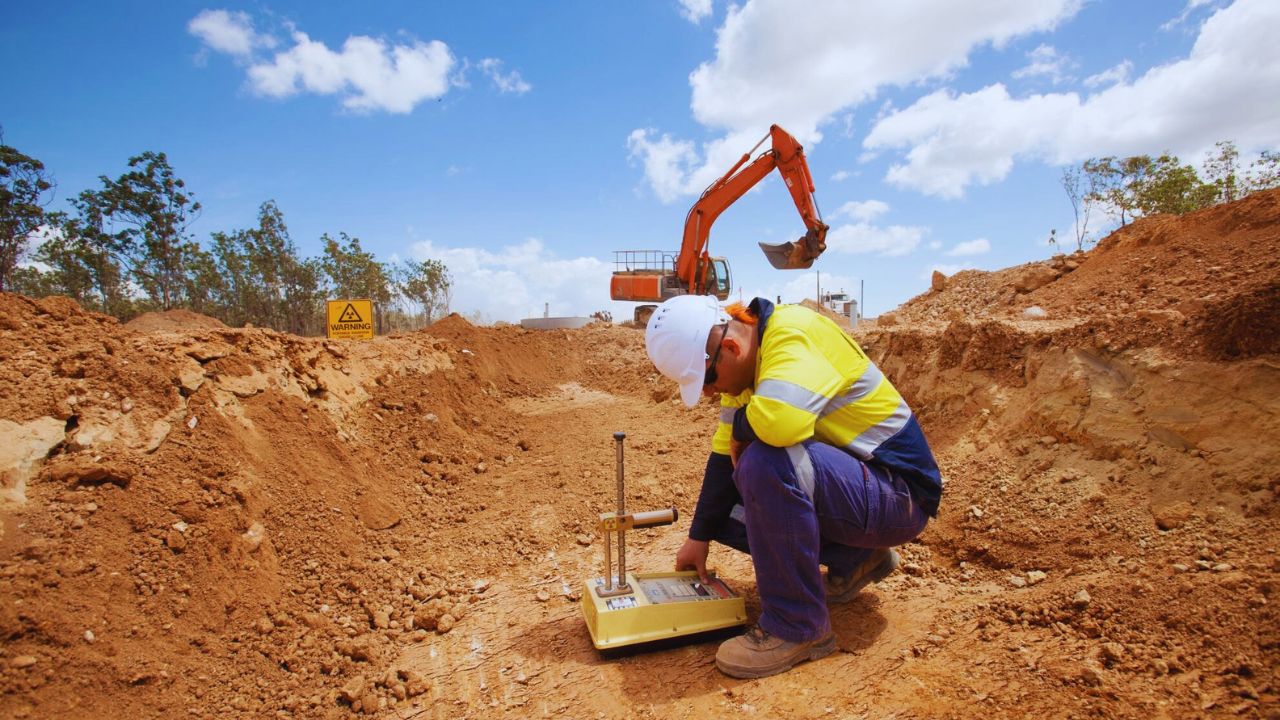The Main Principles Of Geotheta
The Main Principles Of Geotheta
Blog Article
The Definitive Guide to Geotheta
Table of ContentsUnknown Facts About GeothetaGeotheta Can Be Fun For EveryoneGeotheta Can Be Fun For AnyoneEverything about Geotheta
They team up with civil designers, structural engineers, designers, and other specialists to integrate geotechnical considerations right into the general job design and building and construction procedure. This requires efficient teamwork, coordination, and interaction to ensure that the geotechnical aspects line up with the task goals and fulfill regulatory requirements.Mining & Products Design: Principles of drilling, infiltration rates, and aspects impacting the choice of drilling technique. Features of dynamites, firing systems and blast patterns. Blowing up methods in surface area and below ground workings. Unique blasting strategies at excavation borders. Resonance and noise control. Mechanical and constant methods to fragmentation, including longwall shearing and fullface boring.
Modelling of piece and bit dimension circulations; comminution as a transfer function. Comminution modern technology: crushing, grinding, dimension category. Integrated analysis of fragmentation and comminution operations. Provided by: Mining & Materials Design.
More About Geotheta
Bachelor's level programs in civil, geotechnical, geological, and ecological design commonly last 4 years and consist of general education courses in English, social scientific research, and the liberal arts, along with courses in advanced mathematics, architectural geology, and fluid mineralogy. (https://www.metal-archives.com/users/geotheta)
Geotechnical design involves the analysis of the dirt and rock conditions at a particular website, and their ramifications for the growth of that site. As many frameworks depend on the ground for support, it lacks surprise that a detailed understanding of the ground conditions, and the viability of structure systems, are vital to the lasting stability and performance of the building or structure.
Specialising in the investigation of geological developments and ground behaviour, geotechnical engineers carry out scientific investigations and testing to understand the influence these geological developments might carry the design and construction of building, civil and framework projects. This competence is essential for the layout and building of structures, roadways, tunnels, dams, bridges, and water supply and sewer systems.
The geotechnical team at Douglas Allies regularly talk to architects, layout designers, programmers, and contractors to make referrals on design and advancement proposals to make certain that the constructed frameworks are suitably designed for the ground problems. As an example, the design of footing systems needs to take into consideration the weight of the framework, the ability of the ground to sustain that weight together with activity resistances and efficient building.
Some Ideas on Geotheta You Need To Know
This task is greatly simplified by the usage of our Douglas Map geospatial platform that makes this details conveniently accessible in a very easy to utilize web internet browser user interface. A geotechnical engineer will certainly route the boring of boreholes and examination pits to accumulate soil and various other examples, and additionally analyze surface functions and ground direct exposures to develop a geotechnical design of the subsurface conditions.
Depending upon the task type and ground problems ran into, lab testing may amongst other things assess strength, compressibility, reactivity and/or leaks in the structure of soil and rock examples. After this data is collected and collected, the outcomes are used for a geotechnical version of the site, which is normally presented as sections throughout the website.

A geotechnical investigation by nature can only examine the ground problems at the places pierced or excavated. All-natural variations in dirt and rock problems can happen throughout a site and between examination places. It is therefore good technique that the geotechnical designer be maintained throughout building of the project to give on-site confirmation that the ground conditions experienced are consistent with the assumptions and advice provided in the geotechnical investigation record.
Geotheta - Truths
Geotechnical designers use their in-depth knowledge of dirt and rock to examine threat and fix issues on varied facilities projectsGeotechnical design is a specialist branch of civil engineering which takes a look at the practices of planet products and the application of dirt and rock technicians. Consulting Engineer. As a geotechnical engineer, you will certainly assess the physical, mechanical and chemical homes of dirt and rock in order to design structures, keeping frameworks and earthworks
Geotechnical design is carefully linked to and overlaps with, both design geology and ground engineering - https://www.abnewswire.com/companyname/geotheta.com_139529.html#detail-tab. It's feasible to specialise in geotechnics or benefit a geotechnical business but be called an engineering geologist or a ground designer. As a geotechnical designer, you'll need to: build and maintain partnerships with customers and various other experts associated with the site, throughout each projectmaintain safety criteria on website be mindful of cost effects when you make recommendationsstudy geological maps and airborne photos from a range of resources and from various time periodsexamine building and construction plans to see exactly how viable they are based upon your understanding of the siteinvestigate risks or geological threats for the sitesearch for eco sensitive features, such as land fill beginning to create factual and expository ground modelsplan area investigationsdrill and analyse samples of bedrock, soil, groundwater and added materials manage other specialists on sitesolve technological issues as they develop, such as unexpected frameworks at drill sitesmonitor problems throughout and after building and construction to make certain frameworks are stable in the brief and long termadding information collected on site to your first researchcreating geotechnical computations, illustrations, and 2 or three-dimensional computer versions interpreting the datamaking recommendations concerning the proposed use the site

Report this page